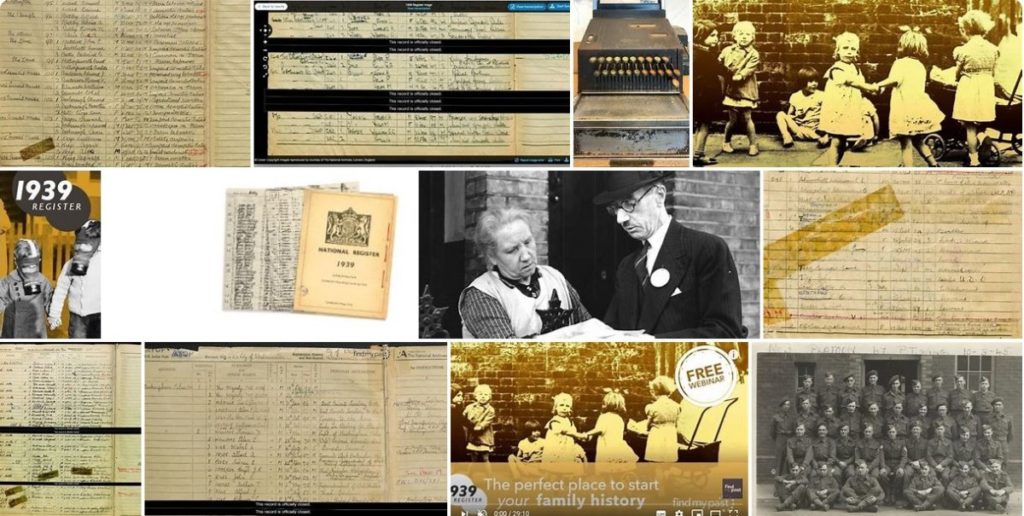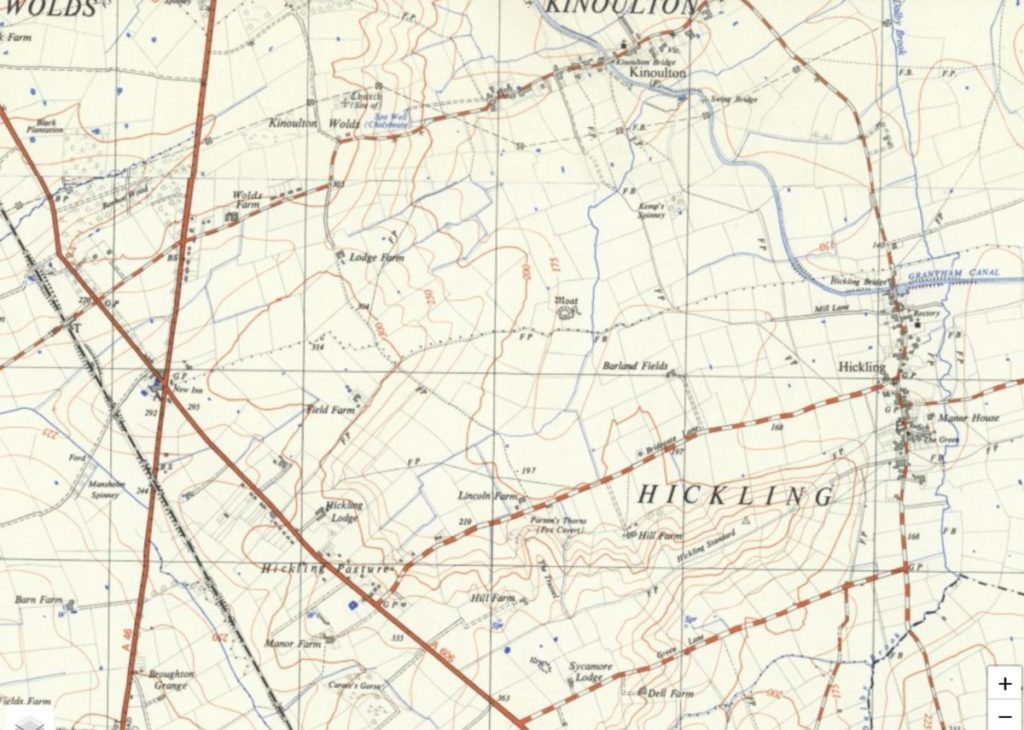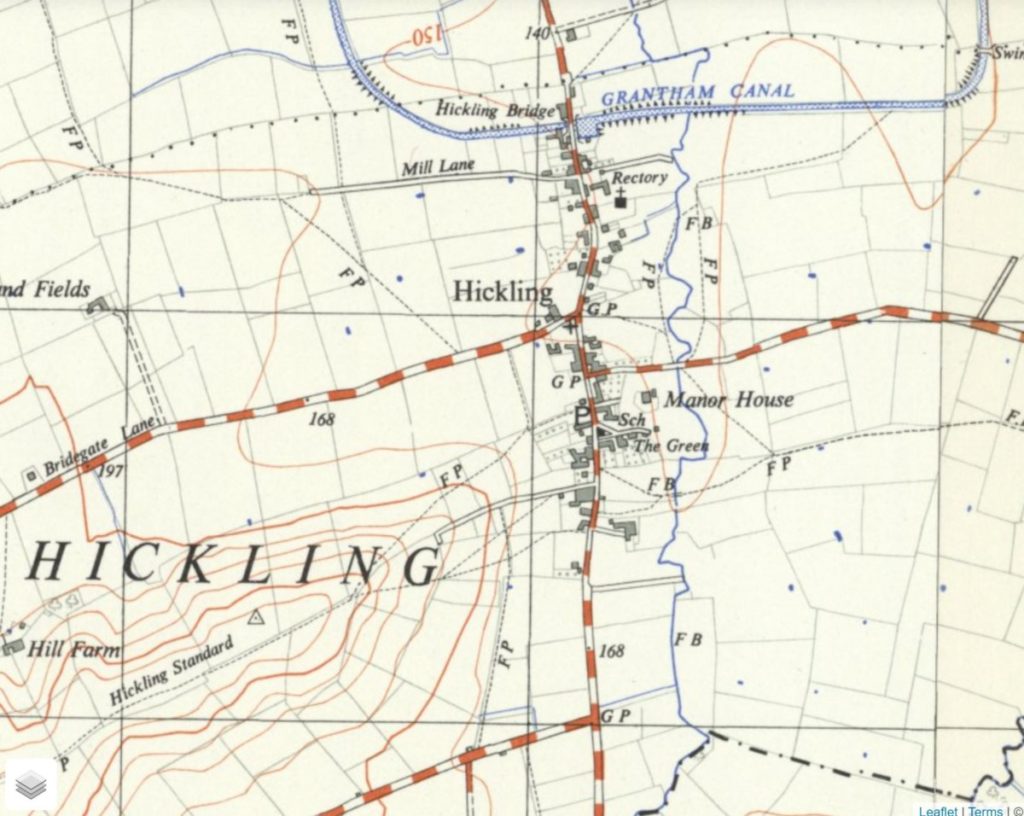The 1939 Register was taken as part of the wartime preparations in September of 1939 just after the outbreak of war:
The 1939 Register was taken on 29 September 1939. The information was used to produce identity cards and, once rationing was introduced in January 1940, to issue ration books. Information in the Register was also used to administer conscription and the direction of labour, and to monitor and control the movement of the population caused by military mobilisation and mass evacuation.
National Archives
It is particularly useful for a number of reasons:
- Census data is published under the 100-year rule which makes this relatively up-to-date information unusually recent.
- The census records for 1932 were lost in a fire in 1942 and there was no census in 1942 because of WWII – this means there is a thirty year gap in the full census data we have become used to seeing.
- The 1939 Register was a working document (see, below); this means that it includes data later than 1939, too (notes were added for another 50 years until 1991).
For full information about the 1939 Register (including how to access the records) there is a useful guide available on the National Archives website.
We have access to the records for Hickling, including copies of the original pages; please contact us if you would like any help with these.
Things you need to know about the 1939 Register:
- It contains about 40 million records of the civilian population (not military personnel) capturing details of name, address, date of birth and occupation on that specific day (September 29th 1939).
- It covers the civilian population (including military personnel on leave on that day and civilians on military bases) but not Scotland, Northern Ireland, Channel Islands or the Isle of Man.
- “However, since conscription did not begin in earnest until January 1940, most people who subsequently served in the armed forces during the Second World War were still civilians in September 1939.” (NA)
- Each household and each individual within it is also allocated a schedule number and national registration numbers/sub-numbers. These numbers form the basis of schemes such as evacuation, rationing and later National Health Service records.
- As a working document it includes notes added over the following 50 years (until 1991); this includes surname changes when a woman has married, dates of death etc.
There are some limitations to be aware of:
- “The record of anyone born less than 100 years ago is closed unless they are known to have died. If someone was born less than 100 years ago, and has died, their record may still be closed if their death was not notified and recorded in the register. Deaths that occurred outside the United Kingdom are unlikely to have been notified. These include the majority of Second World War deaths.” (NA)
- If an individual wasn’t in England or Wales on this date then their records are held separately and they are not publicly available.
- As with all such exercises there are mistakes; some names are missing and were recorded separately at a later date or they were mis-spelt. Some people deliberately avoided being registered (perhaps to avoid conscription, for example).
- “A very few enumeration district books (Transcript Books) are known to be missing from the 1939 Register. The people in those districts would have been registered and received their identity cards and ration books, but unfortunately the books themselves are not included in the register that has been released because they arrived too late at the Central National Registration Office” (NA)
- “The names in the Register were copied by the enumerator from the household schedules, hand-written by the householders. The Register was subsequently in constant use for more than 50 years so some entries will have become hard to read through frequent handling. Middle initials are generally included, but middle names rarely appear in full.” (NA)
- Reception Areas: “By 29 September 1939 there had already been mass evacuations of the population so many people may be listed in an entirely different location to the rest of their family. Many seasonal workers, such as hop-pickers, were still in the countryside when the Register was taken, and not at their normal home addresses in urban areas.” (NA)
- If someone can’t be found where you expect them to be, it is worth checking the Reception Areas: Bedfordshire, Berkshire, Buckinghamshire, Cambridgeshire, Cumberland, Dorset, Herefordshire, Huntingdonshire, Northamptonshire, Oxfordshire, Rutland, Shropshire, Suffolk, Sussex, Westmorland, Wiltshire, the Isle of Wight, the Isle of Ely, the Soke of Peterborough, the Holland and Kesteven divisions of Lincolnshire.
- However, this is not an exhaustive list; there was considerable population movement at this time. The Hickling lists, for example, appear to include children in households of school age who are apparently unrelated to householders (or at least have different surnames) – more work is needed on this.
- “The Register was continually updated while National Registration was in force, when it was a legal requirement to notify the registration authorities of any change of name or address. This ended in 1952, but since 1948 the Register had also been used by the National Health Service, who continued updating the records until 1991, when paper-based record keeping was discontinued. Changes of name for any reason were recorded; in practice this was mostly when women changed their surnames on marriage or re-marriage, but also includes changes of name for any other reason, such as by deed poll.” (NA)
- Changes that happen outside the British system; for example, deaths abroad, will not have been noted.
- Sometimes there wasn’t enough space for additional notes and these were put at the end of the relevant enumeration book instead of by the original entry.
- “In February 2004 the Lord Chancellor’s Advisory Council on National Records and Archives considered and accepted a proposal for the use of a standard closure period, and that a lifetime of 100 years should be assumed. Individuals’ records remain closed for 100 years from their date of birth or until proof of death. Information relating to living individuals is withheld under sections 40(2) and 40(3)(a)(i) of the Freedom of Information Act 2000.” (NA)
- Find My Past have checked for exact matches with death records and have, consequently, opened additional records. Ancestry.com conduct an annual check and update their records accordingly.
- “The records of the 1939 Register were subsequently used by the National Health Service at its inception in 1948 and became the NHS Central Register, transferred to the Health and Social Care Information Centre (HSCIC) in 2007, and now called NHS Digital. The records remained with the NHS up until 1991 – therefore most changes of name between 1939 and 1991 are listed in the records. Although all changes of name or address should have been notified, this did not always happen, and it was no longer a legal requirement after the National Registration Act was repealed in 1952. Changes of address were recorded only at the local level, and so do not appear in the 1939 Register.” (NA)
- The original register went across a double page; the ‘postings column’ has not been made public because it holds sensitive codes. You can, however, request to see your own complete record.



